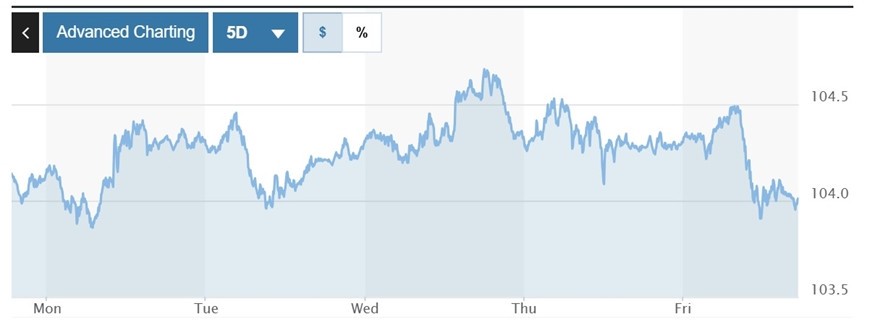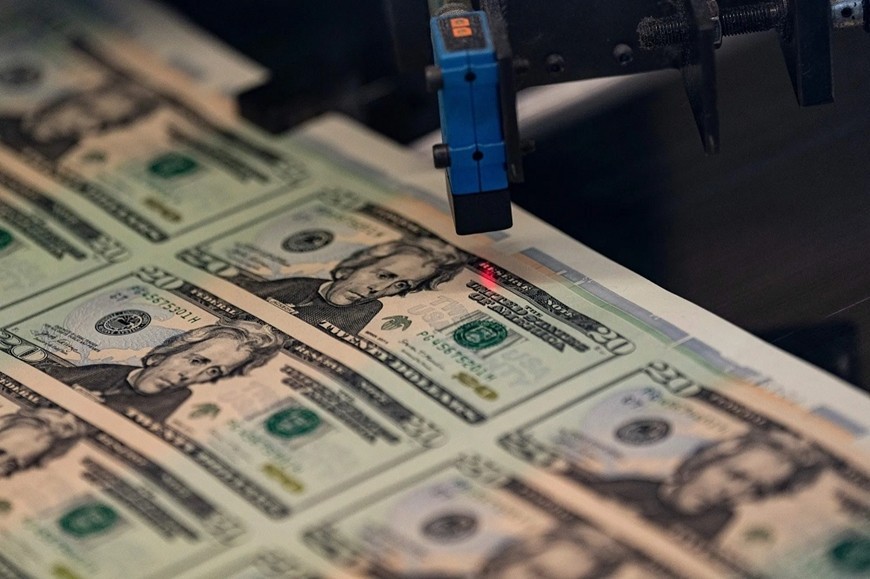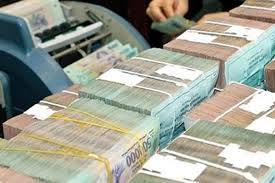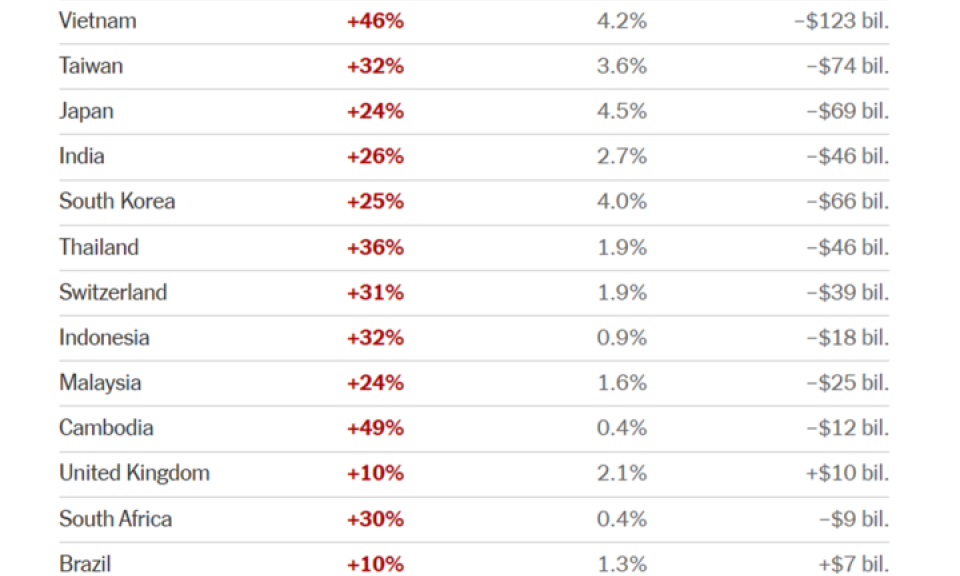The USD Index (DXY), which measures the greenback's performance against a basket of six major currencies, stood at 104.01.
Forecast of USD trend this week
The DXY index is showing a reversal this past week.
The greenback fell as traders weighed the tough tariffs that U.S. President Donald Trump is expected to announce this week. Optimism that President Donald Trump would be flexible on tariffs had boosted the greenback earlier in the week, but traders remained nervous ahead of his planned April 2 announcement of “reciprocal” tariffs.

In addition, data showing core inflation rose 0.4% in February, higher than expected, and a survey from the University of Michigan showing that consumers' 12-month inflation expectations jumped to their highest level in more than two years in March, weighed on the greenback.
The index hit a high of 104.68 before falling back to close the week at 104.01. The bullish correction to 105 that was mentioned last week has not happened yet, raising speculation that the DXY will see a fresh decline from here.
The DXY index may fall to 103 in the coming time. At that time, a break below 103 will increase the bearish pressure and pull the index down to the 102-101 zone and even to 100 in the coming weeks.
Any recovery will face resistance at 104.85 and 105.20.
Meanwhile, the support zone at 1.0730-1.07 for EUR/USD mentioned last week held very well. The EUR hit a low of 1.0733 and bounced back from there.
Current resistance for EUR/USD is at 1.0850. A break above this level could send EUR to 1.0950. A break above 1.0950 would trigger bullish momentum. Such a breakout could send EUR/USD to 1.11 or even 1.1180 in the medium term.
The outlook would turn bearish if EUR/USD breaks below 1.0730. If that happens, the currency could drop to the 1.0650-1.06 zone. If EUR/USD stays below 1.0850, the decline could be on the cards.
The 10-year US Treasury yield broke above 4.35% last week but failed to hold. It reversed lower after hitting 4.40%. Current support for the yield is at 4.2%. A break below that level could drag the yield down to 4.1% - a key support level.
A decline to 4.1% and then below 4% would be a rather bearish scenario, with the US 10-year yield likely to fall to 3.8-3.7% over the medium term.

USD exchange rate in the country today
In the domestic market, at the beginning of the trading session on March 31, the State Bank announced the central exchange rate of the Vietnamese Dong to the USD at 24,843 VND.
* The reference exchange rate at the State Bank's transaction office has slightly decreased, currently at: 23,651 VND - 26,035 VND.
USD exchange rate at commercial banks buy and sell as follows:
USD exchange rate | Buy | Sell |
Vietcombank | 25,370 VND | 25,760 VND |
Vietinbank | 25,245 VND | 25,825 VND |
BIDV | 25,405 VND | 25,755 VND |
* The EUR exchange rate at the State Bank's buying and selling exchange center increased slightly, currently at: 25,478 VND - 28,160 VND.
EUR exchange rates at commercial banks are as follows:
EUR exchange rate | Buy | Sell |
Vietcombank | 26,888 VND | 28,362 VND |
Vietinbank | 26,866 VND | 28,366 VND |
BIDV | 27,142 VND | 28,338 VND |
* The Japanese Yen exchange rate at the State Bank's exchange office for buying and selling has slightly decreased, currently at: 156 VND - 173 VND.
Japanese Yen Exchange Rate | Buy | Sell |
Vietcombank | 163.30 VND | 173.68 VND |
Vietinbank | 166.06 VND | 175.76 VND |
BIDV | 166.42 VND | 174.09 VND |
Source: https://baolangson.vn/ty-gia-usd-hom-nay-31-3-trien-vong-tieu-cuc-doi-voi-dong-usd-5042613.html


![[Photo] A brief moment of rest for the rescue force of the Vietnam People's Army](https://vstatic.vietnam.vn/vietnam/resource/IMAGE/2025/4/3/a2c91fa05dc04293a4b64cfd27ed4dbe)
![[Photo] Special relics at the Vietnam Military History Museum associated with the heroic April 30th](https://vstatic.vietnam.vn/vietnam/resource/IMAGE/2025/4/3/a49d65b17b804e398de42bc2caba8368)
![[Photo] Moment of love: Myanmar people are moved to thank Vietnamese soldiers](https://vstatic.vietnam.vn/vietnam/resource/IMAGE/2025/4/3/9b2e07196eb14aa5aacb1bc9e067ae6f)

![[Photo] General Secretary To Lam receives Japanese Ambassador to Vietnam Ito Naoki](https://vstatic.vietnam.vn/vietnam/resource/IMAGE/2025/4/3/3a5d233bc09d4928ac9bfed97674be98)
![[Photo] Prime Minister Pham Minh Chinh chairs meeting after US announces reciprocal tariffs](https://vstatic.vietnam.vn/vietnam/resource/IMAGE/2025/4/3/ee90a2786c0a45d7868de039cef4a712)














































































Comment (0)